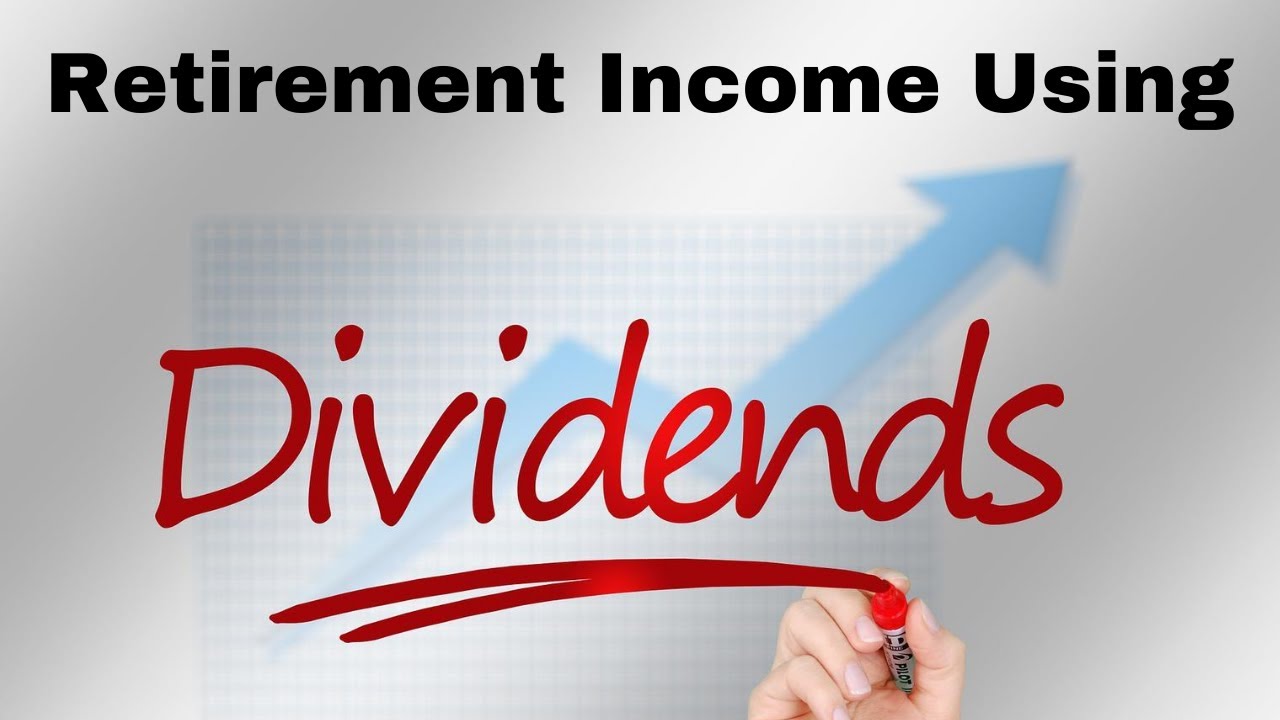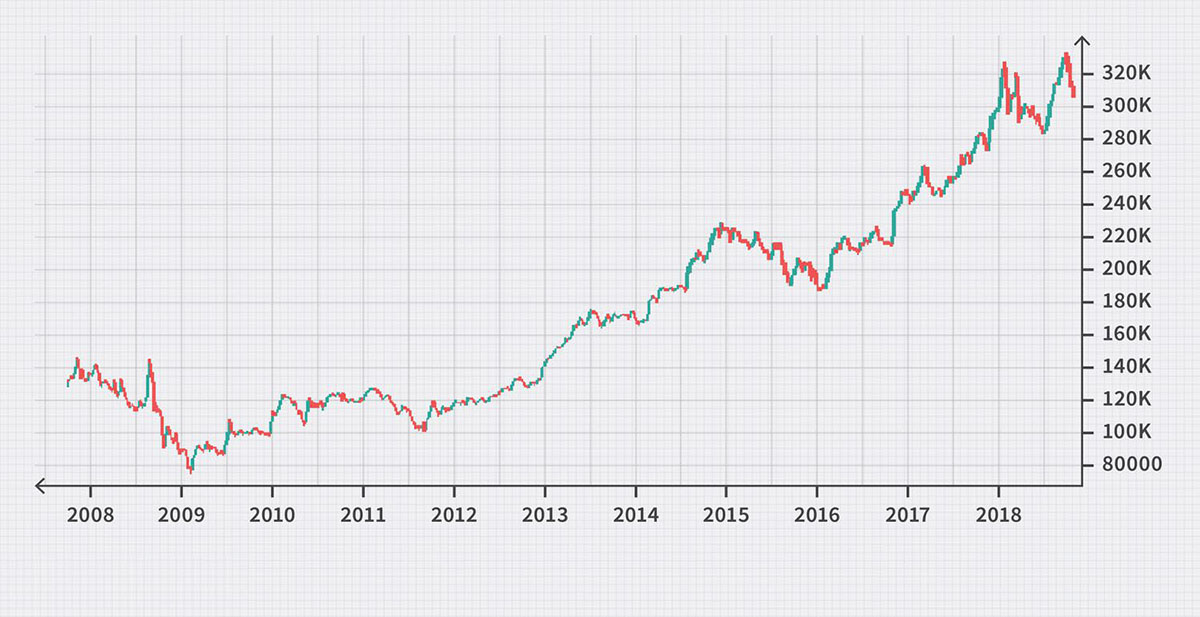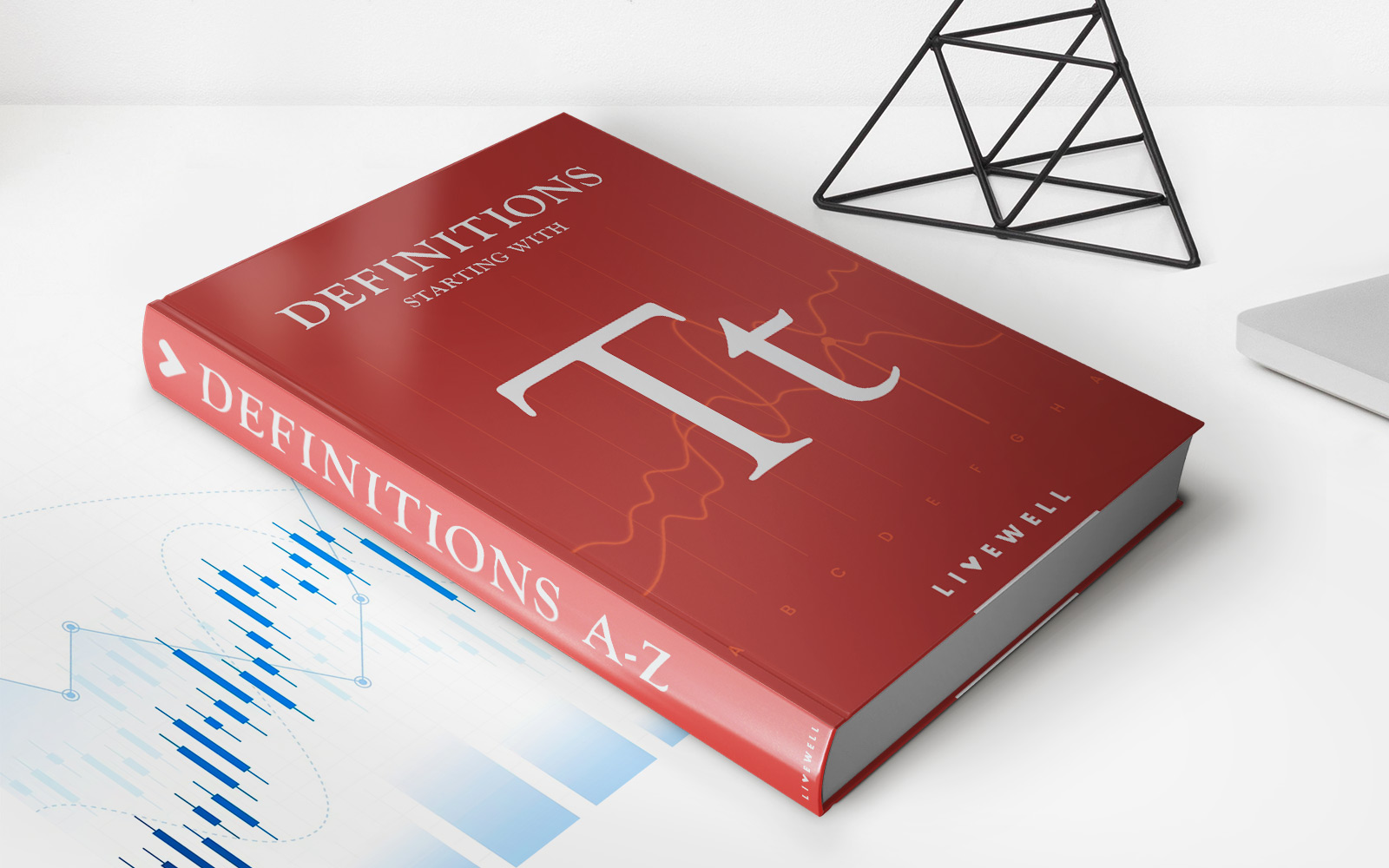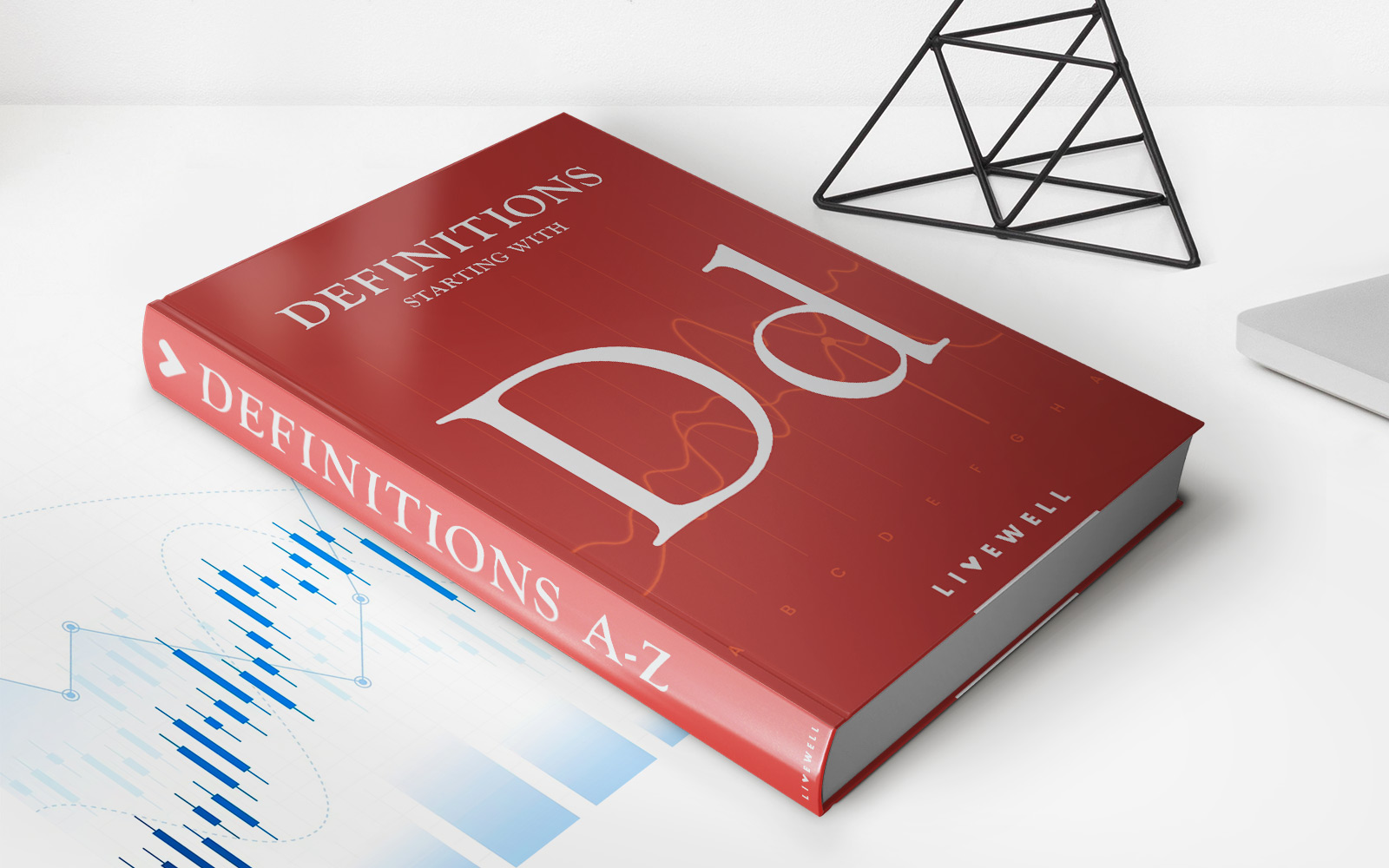

Finance
How To Achieve Retirement Through Dividends
Published: January 3, 2024
Learn how to achieve retirement through dividends with our comprehensive finance guide. Maximize your income and secure your financial future today!
(Many of the links in this article redirect to a specific reviewed product. Your purchase of these products through affiliate links helps to generate commission for LiveWell, at no extra cost. Learn more)
Table of Contents
- Introduction
- Understanding Dividends
- Importance of Dividends in Retirement Planning
- Building a Dividend Portfolio
- Researching Dividend Stocks
- Evaluating Dividend Yield and Growth
- Dividend Reinvestment Plans (DRIPs)
- Tax Considerations for Dividend Income
- Dividend Investing Strategies for Retirement
- Dividend Stocks vs. Other Retirement Investment Options
- Risks and Challenges of Dividend Investing in Retirement
- Monitoring and Adjusting Your Dividend Portfolio
- Conclusion
Introduction
Retirement planning is a critical part of financial stability and security for the future. As individuals approach their retirement years, it becomes increasingly important to explore various investment options that can generate steady income to support their lifestyle. One such option is dividend investing.
Dividends are periodic cash payments made by companies to their shareholders as a distribution of profits. These payments are typically made on a quarterly basis and are a tangible way for investors to earn passive income from their investments. While dividends can be a viable investment strategy throughout one’s life, they hold a particular significance during retirement.
In this article, we will explore the world of dividends and how they can play a crucial role in achieving a comfortable retirement. We will delve into the importance of dividends in retirement planning, discuss strategies for building a dividend portfolio, and highlight the benefits and considerations of dividend investing during retirement.
Whether you are nearing retirement or are simply interested in exploring different investment options, understanding how dividends can contribute to your financial stability is key. Without further ado, let’s dive into the world of dividends and discover how they can help you achieve your retirement goals.
Understanding Dividends
Before we delve into the details of using dividends for retirement planning, it’s essential to have a solid understanding of what dividends are and how they work.
Dividends are a portion of a company’s profits distributed to its shareholders. When a company generates excess cash after meeting its operational and investment needs, it can choose to distribute a portion of those earnings to its shareholders. Dividends are typically paid in the form of cash, although some companies may offer dividend reinvestment plans (DRIPs), allowing shareholders to reinvest their dividends back into additional shares of the company’s stock.
Companies that pay dividends are often well-established, financially stable, and have a consistent track record of generating profits. They tend to be found in mature industries, such as utilities, consumer staples, and pharmaceuticals, where the business models generate steady cash flows.
Dividends can provide investors with a regular income stream, making them particularly attractive to retirees who rely on passive income to meet their living expenses. By investing in dividend-paying stocks, retirees can supplement their pension or other sources of income.
It’s important to note that not all companies pay dividends. Growth-focused companies often reinvest their profits back into the business to fuel expansion and innovation. As a result, they may choose to allocate their earnings towards research and development, acquisitions, or debt repayment rather than distributing them as dividends. Investors seeking dividend income should focus on companies with a history of consistent dividend payments.
Another factor to consider when looking at dividends is the dividend yield. The dividend yield is calculated by dividing the annual dividend per share by the stock price and expressing it as a percentage. This metric helps investors assess the income potential of dividend-paying stocks and compare different investments.
Now that we have a solid understanding of dividends, let’s explore why dividends are crucial for retirement planning and how they can help individuals achieve a comfortable retirement.
Importance of Dividends in Retirement Planning
Dividends play a crucial role in retirement planning, offering several benefits that make them an attractive investment option for retirees.
One of the key advantages of dividends in retirement planning is the consistent income stream they can provide. Unlike other investment options, such as relying solely on capital gains or interest income, dividends offer a predictable cash flow that can help retirees cover their living expenses. This steady income can provide a sense of financial security and peace of mind during retirement.
Furthermore, dividends have the potential to increase over time, providing a potential hedge against inflation. Companies that consistently raise their dividends demonstrate their ability to generate sustainable profits and often outpace inflation with their dividend growth. By investing in dividend stocks with a history of regular dividend increases, retirees can protect their purchasing power and maintain a comfortable standard of living throughout their retirement years.
Another advantage of dividends in retirement planning is the potential for capital preservation. Companies that pay dividends tend to be well-established and financially stable. Their ability to generate consistent profits and distribute dividends is an indication of their solidity and resilience in the market. By investing in dividend-paying stocks, retirees can benefit from the stability and long-term potential of these companies while enjoying a regular income stream.
In addition, dividends offer flexibility in retirement. Retirees can choose to reinvest their dividend income to compound their returns or use the cash to cover living expenses. This flexibility allows individuals to tailor their investment strategy to their specific financial needs and goals.
Lastly, dividends provide a buffer against market fluctuations. While stock prices can be volatile in the short term, dividends provide a relatively stable income stream that is less susceptible to market downturns. By focusing on the income generated through dividends, retirees can have greater peace of mind knowing they have a consistent source of cash flow, regardless of how the stock market performs.
Overall, dividends bring reliability, growth potential, capital preservation, flexibility, and stability to retirement planning. Incorporating dividend-paying stocks into an investment portfolio can be an effective strategy for retirees seeking a steady income stream and long-term financial security.
Building a Dividend Portfolio
When it comes to building a dividend portfolio for retirement, it’s essential to construct a well-diversified collection of dividend-paying stocks. A well-diversified portfolio reduces the risk of relying on a single company or industry for dividend income. Here are some key steps to consider when building your dividend portfolio:
- Define your investment goals: Before selecting specific dividend stocks, determine your investment objectives and risk tolerance. Are you looking for high dividend yield or steady dividend growth? Understanding your goals will help you select the right stocks for your portfolio.
- Conduct thorough research: Research is key to identifying dividend stocks that align with your investment goals. Examine factors such as company financials, dividend history, market position, and future growth prospects. Learn about industry trends and regulatory changes that may impact the company’s ability to pay dividends.
- Diversify your holdings: Aim to diversify your portfolio across different industries, sectors, and geographic regions. This reduces the risk of concentration in a single area and helps protect against any downturns in specific sectors or regions.
- Consider dividend aristocrats: Dividend aristocrats refer to companies with a track record of consistently increasing their dividends for a minimum number of consecutive years (e.g., 25 years). These companies tend to be financially stable and reliable dividend payers, making them appealing choices for long-term dividend investors.
- Beware of dividend traps: Some companies offer high dividend yields that may seem attractive, but they could be unsustainable or a sign of financial distress. It’s crucial to analyze a company’s ability to sustain and grow its dividend payments over time.
- Monitor your portfolio: Regularly review your holdings to assess their performance and dividend sustainability. Keep an eye on any changes in company fundamentals or the overall market environment that may impact the dividend-paying ability of your stocks.
Remember, building a dividend portfolio is a long-term endeavor. It requires patience, discipline, and continuous monitoring. By following these steps and regularly reassessing your portfolio, you can build a resilient dividend portfolio that aligns with your retirement goals and provides a consistent income stream for the years to come.
Researching Dividend Stocks
Researching dividend stocks is a crucial step in building a successful dividend portfolio for retirement. Conducting thorough research helps you identify companies with a history of consistent dividend payments, strong financials, and future growth prospects. Here are some key factors to consider when researching dividend stocks:
- Dividend History: Look for companies that have a track record of paying dividends consistently over time. Assess whether the company has increased its dividends annually or maintained a stable payout. Companies that have consistently paid and raised dividends demonstrate their commitment to rewarding shareholders.
- Financial Health: Evaluate the financial health of the company by analyzing its financial statements, including income statements, balance sheets, and cash flow statements. Look for companies with strong profitability, manageable levels of debt, and consistent cash flow generation. A financially stable company is more likely to maintain and grow its dividend payments.
- Industry and Competitive Position: Consider the company’s industry and its competitive advantage within that industry. Is the company in a growth sector with strong long-term prospects? Assess the company’s competitive position, market share, and ability to adapt to changing market conditions. Investing in companies with a strong market position can increase the likelihood of sustained dividend payments.
- Dividend Yield and Payout Ratio: Analyze the dividend yield, which is calculated by dividing the annual dividend per share by the stock price. A higher yield may indicate an attractive income-generating opportunity, but it’s important to assess whether the yield is sustainable. Evaluate the payout ratio, which measures the percentage of earnings paid out as dividends. A lower payout ratio suggests that the company has ample room to continue paying dividends and potentially increase them in the future.
- Management and Corporate Governance: Research the company’s management team and corporate governance practices. A competent management team with a focus on shareholder value and ethical business practices may increase the likelihood of sustained dividend payments and long-term success.
Furthermore, it’s essential to utilize resources such as financial news websites, analyst reports, and company filings to gather information and insights. Consider using stock screening tools to identify dividend-paying stocks that meet your specific criteria, such as dividend growth rate, industry, and market capitalization.
Remember that researching dividend stocks requires diligence and a comprehensive approach. It’s crucial to assess the overall investment potential of a company beyond its dividend-paying ability. By thoroughly researching and analyzing dividend stocks, you can select the right companies for your dividend portfolio and enhance your chances of building a successful retirement investment strategy.
Evaluating Dividend Yield and Growth
When researching dividend stocks, evaluating the dividend yield and growth is a critical step in determining their potential as investments. The dividend yield provides insight into the current income generated by a stock, while dividend growth indicates the potential for increasing dividend payments over time. Understanding and analyzing these two factors can help you identify attractive dividend investments for your retirement portfolio.
1. Dividend Yield: The dividend yield is a vital metric that calculates the annual dividend payment relative to the stock price and expresses it as a percentage. It represents the income you can expect to receive from the investment based on the stock’s current price. A higher dividend yield suggests a higher potential income stream from the investment.
However, it’s important to note that a high dividend yield may not always be advantageous. Sometimes, a high dividend yield can be an indication of an undervalued stock, but it can also indicate market inefficiencies or potential risks, such as an unsustainable dividend payout or a declining stock price. Therefore, it’s crucial to consider other factors, such as the company’s financial health and long-term dividend sustainability, alongside the dividend yield.
2. Dividend Growth: Dividend growth refers to the rate at which a company increases its dividend payments over time. A consistent and robust dividend growth track record demonstrates a company’s ability to generate sustainable profits and return value to shareholders. Dividend growth is particularly important for retirees looking for a reliable income stream that keeps pace with inflation and supports their financial needs in retirement.
Examine the company’s historical dividend growth rate over several years, as well as its future growth prospects. Companies with higher dividend growth rates are often found in sectors with strong growth potential or have proven their ability to adapt to changing market conditions. However, it’s important to ensure that the dividend growth is sustainable and not just a result of a short-term boost in earnings or unsustainably high payout ratios.
When evaluating dividend yield and growth, it’s essential to strike a balance. A high dividend yield may be tempting, but it could come with higher risk. On the other hand, a low dividend yield with consistent dividend growth may indicate a more stable and sustainable investment. Consider your risk tolerance, income needs, and portfolio objectives to determine the right balance between yield and growth for your retirement portfolio.
It’s worth noting that dividend yield and growth are not the only factors to consider when evaluating dividend stocks. It’s important to analyze a company comprehensively, considering factors such as financial health, industry trends, management quality, and market conditions. Furthermore, diversifying your dividend portfolio across different sectors and industries can help mitigate risks and maximize income potential.
By thoroughly evaluating the dividend yield and growth of prospective dividend stocks, you can make informed investment decisions that align with your retirement goals and enhance your income potential.
Dividend Reinvestment Plans (DRIPs)
In addition to receiving dividends in cash, investors have the option to participate in Dividend Reinvestment Plans (DRIPs). A DRIP allows shareholders to reinvest their dividends back into additional shares of the issuing company’s stock, often at a discounted price. This reinvestment process compounds the investment and can offer several benefits for investors, particularly those in retirement.
1. Compounding Returns: By reinvesting dividends, investors can harness the power of compounding returns. Dividend reinvestment allows for the purchase of additional shares, leading to an increase in the total number of shares owned. Over time, these additional shares generate their own dividends, which are then reinvested to purchase even more shares. This compounding effect can significantly enhance long-term investment returns.
2. Cost Averaging: DRIPs often offer shares at a discounted price, typically by waiving commission fees. This means that investors can acquire additional shares at a lower cost compared to purchasing shares in the open market. This cost averaging can be particularly beneficial during periods of market volatility, as it allows investors to acquire more shares when prices are lower, potentially improving the overall average cost per share.
3. Automatic Reinvestment: DRIPs simplify the process of reinvesting dividends. Once enrolled, investors don’t have to manually reinvest each dividend payment or make decisions on how to allocate the funds. The reinvestment is done automatically, ensuring that the dividends are working for you without the need for regular monitoring or active decision-making.
4. Long-Term Growth Potential: By consistently reinvesting dividends, retirees can benefit from the potential long-term growth of the underlying company. Dividend-paying companies often have solid fundamentals, strong cash flows, and a history of stable operations. Reinvesting dividends can allow retirees to participate in the growth of these companies and potentially enhance their overall investment returns.
It is important to note that not all companies offer DRIPs, and the availability and specifics of the plans can vary. Some companies may have certain criteria, such as minimum share ownership, to participate in their DRIPs. Additionally, participating in a DRIP means relinquishing the immediate cash flow from dividends, which may require careful budgeting and planning for retirees who rely on dividend income for living expenses.
Before participating in a DRIP, retirees should carefully consider their financial goals, income needs, and overall investment strategy. Evaluate the terms and costs associated with the DRIPs, considering factors such as the discount offered, fees, and the ability to sell shares if needed.
In summary, DRIPs can be a valuable tool for retirees looking to maximize the benefits of dividend investing. By reinvesting dividends, retirees can harness the power of compounding returns, take advantage of discounted share prices, and potentially enhance their long-term growth potential. However, it is essential to research and consider the specifics of each DRIP and ensure it aligns with your investment objectives and retirement plan.
Tax Considerations for Dividend Income
When it comes to dividend income in retirement, understanding the tax implications is crucial for effective financial planning. Here are some key tax considerations to keep in mind:
1. Qualified Dividends vs. Ordinary Dividends: Dividends can be classified as either qualified dividends or ordinary dividends, depending on specific criteria set by the Internal Revenue Service (IRS). Qualified dividends are subject to lower tax rates, similar to long-term capital gains rates, while ordinary dividends are taxed at the individual’s ordinary income tax rate. It is important to differentiate between the two types of dividends as it can impact your overall tax liability.
2. Tax-Advantaged Accounts: Holding dividend-paying stocks within tax-advantaged accounts, such as Individual Retirement Accounts (IRAs) or 401(k)s, can offer potential tax benefits. Dividends earned within these accounts are generally not subject to immediate taxation. Instead, taxes are deferred until distributions are taken from the account, which may occur during retirement.
3. Tax Bracket Considerations: Retirees should consider their tax bracket when planning around dividend income. Dividends may push an individual into a higher tax bracket, which could result in higher income tax rates. Understanding your tax bracket allows for better management of your dividend income and ensures that you can plan accordingly to minimize any potential tax increase.
4. Foreign Dividend Taxation: If you hold dividend-paying stocks of foreign companies, it’s important to understand the potential tax implications. Different countries have varying tax rules regarding dividends, and there may be additional taxes or withholding requirements on foreign dividend income. Consult with a tax professional or refer to tax treaties to understand the specific tax treatment of foreign dividend income.
5. State and Local Taxes: In addition to federal taxes, dividend income may also be subject to state and local taxes. Each state may have different rules and tax rates, so it’s essential to research the specific tax implications in your state of residence.
6. Asset Location: Consider the location of your dividend-paying investments in different types of accounts. For example, holding dividend-paying investments in a tax-advantaged account can help minimize the tax impact, while investments in regular brokerage accounts may be subject to immediate taxation. Strategically allocating your assets across various types of accounts can help optimize your tax efficiency.
To effectively manage and plan for the tax implications of dividend income, it is advisable to consult with a professional tax advisor or financial planner. They can guide you on specific strategies to minimize your tax burden while ensuring compliance with tax laws and regulations.
Understanding the tax considerations for dividend income allows retirees to make informed decisions, maximize their after-tax income, and effectively plan for their financial future.
Dividend Investing Strategies for Retirement
Dividend investing can be an effective strategy for retirees looking to generate a steady income and preserve their wealth. Here are some dividend investing strategies to consider when planning for retirement:
1. Focus on Dividend Aristocrats: Dividend aristocrats are companies that have consistently increased their dividends for a minimum number of consecutive years, such as 25 years. These companies often possess strong financials, stable cash flows, and a proven ability to weather economic cycles. Investing in dividend aristocrats can provide retirees with a reliable income stream and potential for long-term growth.
2. Seek Dividend Growth: Another strategy is to focus on companies with a history of strong dividend growth. These companies may not have an extended track record like dividend aristocrats but have demonstrated their commitment to rewarding shareholders through consistent dividend increases. Dividend growth stocks offer the potential for increasing income over time, helping retirees counter the effects of inflation and maintain their purchasing power.
3. Diversify Across Sectors and Industries: Diversification is crucial for managing risk in any investment portfolio, including dividend portfolios. By spreading investments across different sectors and industries, retirees can reduce their exposure to any single market segment or company-specific risks. Diversification helps ensure a more stable and reliable income stream, as the performance of one sector or industry does not disproportionately impact the overall portfolio.
4. Consider High-Yield Dividend Stocks: High-yield dividend stocks, with a relatively higher dividend yield, can be appealing for retirees seeking substantial income. However, it’s important to carefully evaluate the sustainability of the dividend payout and the underlying financial health of the company. Conduct thorough research to avoid “dividend traps” where high yields may be unsustainable or indicate an underlying issue with the company’s operations.
5. Utilize Dividend ETFs or Mutual Funds: Exchange-traded funds (ETFs) and mutual funds focused on dividends can provide retirees with instant diversification across multiple dividend-paying stocks. These funds may follow an index or have a specific dividend investing strategy. Select funds that align with your investment goals, risk tolerance, and asset allocation preferences.
6. Rebalance and Monitor: Regularly review and rebalance your dividend portfolio to ensure it remains in line with your long-term goals and risk tolerance. Keep track of any changes in market conditions, company fundamentals, or dividend policies that may affect your investments. Adjust your portfolio as needed to maintain the desired asset allocation and risk exposure.
It’s important to note that dividend investing, like any investment strategy, carries risks. Stock market volatility, changes in company financials, or shifts in industry dynamics can impact the performance of dividend stocks. Retirees should carefully assess their risk tolerance and consult with a financial advisor to ensure that their dividend investing strategy aligns with their overall investment objectives and retirement goals.
By implementing a well-thought-out dividend investing strategy, retirees can potentially generate a consistent income stream, preserve their capital, and achieve their financial objectives in retirement.
Dividend Stocks vs. Other Retirement Investment Options
When planning for retirement, it’s important to consider various investment options and weigh the benefits and drawbacks of each. Let’s compare dividend stocks with other retirement investment options to help you make informed decisions:
1. Dividend Stocks: Dividend stocks offer retirees the opportunity to earn a steady income stream from their investments. They can provide both dividend income and the potential for long-term capital appreciation. Dividend stocks are particularly appealing for retirees who rely on passive income to cover their living expenses. However, it’s important to carefully select dividend stocks and assess their sustainability, financial health, and growth potential.
2. Bonds: Bonds are fixed-income securities that pay interest to investors over a specific period. Retirees often consider bonds as a conservative investment option, providing a steady income stream with less risk compared to stocks. However, bond yields may be lower in periods of low interest rates, potentially impacting the overall income generated. Additionally, bond prices can fluctuate depending on the prevailing interest rates, which may result in capital gains or losses.
3. Annuities: Annuities are insurance products that provide a guaranteed income stream for a specific period or for life. They offer retirees the benefit of predictable income, protecting against market volatility. However, annuities often come with fees, restrictions, and relatively lower returns compared to other investments. It’s important to carefully review the terms and features of annuities before committing to them.
4. Real Estate Investment: Real estate investments, such as rental properties or real estate investment trusts (REITs), can also provide income for retirees. Rental properties generate rental income, while REITs offer dividends from the rental income and value appreciation of the properties. Real estate investments can offer diversification, potential tax advantages, and the ability to hedge against inflation. However, they may require active management, maintenance costs, and liquidity considerations.
5. Mutual Funds and ETFs: Mutual funds and exchange-traded funds (ETFs) offer diversification by pooling investors’ money across various assets, including stocks, bonds, and other securities. They are managed by professionals who make investment decisions on behalf of the investors. Mutual funds and ETFs can be suitable for retirees looking for a hands-off approach to investing and diversification without the need for individual stock selection. However, they come with management fees and may not provide the same control or potential for personalized income generation as owning individual stocks.
Ultimately, the most suitable retirement investment option depends on an individual’s financial goals, risk tolerance, and personal preferences. It’s important to consider a mix of investment options to create a well-diversified portfolio that aligns with your retirement objectives.
Remember to consult with a financial advisor or retirement planning professional to evaluate your specific circumstances and develop a retirement investment strategy tailored to your needs. They can help assess the potential risks and rewards of different investment options and guide you in making informed decisions to support your retirement goals.
Risks and Challenges of Dividend Investing in Retirement
While dividend investing can offer many benefits for retirees, it’s important to be aware of the risks and challenges involved. Understanding these potential pitfalls can help you make informed decisions and manage your dividend portfolio effectively. Here are some key risks and challenges to consider:
1. Market Volatility: Dividend stocks are still subject to market fluctuations. During periods of market volatility, stock prices can decline, potentially impacting the value of your dividend investments. It’s important to have a long-term perspective and be prepared for short-term price fluctuations that may impact the market value of your dividend stocks.
2. Dividend Cuts or Suspensions: Companies can face financial difficulties or changes in their business environment that may lead to a reduction or suspension of dividend payments. This can impact your income stream and the overall performance of your dividend portfolio. Thorough research and diversification can help mitigate this risk, but it’s important to monitor your holdings and be prepared to make adjustments if necessary.
3. Interest Rate Risk: Changes in interest rates can impact dividend stocks. For example, when interest rates rise, dividend stocks may become less attractive compared to bonds or other fixed-income investments. This is because investors may shift their focus to higher-yielding fixed-income assets, potentially leading to a decline in the stock prices of dividend-paying companies.
4. Sector and Industry Risks: Certain industries or sectors may experience challenges or undergo significant transformations. Economic downturns or changes in consumer behavior can impact specific sectors, affecting the companies within them and their ability to maintain or increase dividend payments. Diversification across sectors and industries can help mitigate this risk and protect your dividend income.
5. Inflation Risk: Inflation erodes the purchasing power of your income over time. If the dividend payments from your investments do not keep pace with inflation, your real income may decline. It’s important to consider dividend growth stocks or companies with a history of increasing dividends to combat the effects of inflation and maintain your standard of living in retirement.
6. Tax Considerations: Dividend income is subject to taxation, and changes in tax laws or rates can impact the after-tax returns of your dividend investments. It’s essential to be aware of the tax implications of dividend income and consider tax-efficient strategies when managing your dividend portfolio.
7. Overreliance on Dividend Income: Relying solely on dividend income for retirement may pose a risk if a significant portion of your portfolio is concentrated in dividend-paying stocks. Diversification across different asset classes and investment strategies can help manage risk and ensure a more balanced approach to retirement income generation.
It is important to assess your risk tolerance, investment goals, and time horizon when incorporating dividend stocks into your retirement portfolio. Considering potential risks and challenges allows you to develop a well-rounded investment strategy and make informed decisions to support your long-term financial goals.
Monitoring and Adjusting Your Dividend Portfolio
Monitoring and adjusting your dividend portfolio is essential to ensure its continued success and alignment with your retirement goals. Regularly reviewing and evaluating your portfolio allows you to make informed decisions, adapt to market conditions, and maintain a reliable income stream. Here are some key practices to consider:
1. Regular Portfolio Review: Schedule regular reviews of your dividend portfolio to assess its performance and make necessary adjustments. This can be done quarterly, semi-annually, or annually, depending on your preferences. During these reviews, evaluate the financial health of the companies in your portfolio, including their dividend sustainability, earnings growth, and market position.
2. Stay Informed: Keep yourself informed about market trends, industry news, and any developments that may impact the companies in your dividend portfolio. Stay updated on company earnings releases, dividend announcements, and any changes to the business environment that may affect the outlook for your investments. Utilize financial news sources, company reports, and industry publications to stay informed.
3. Reassess Dividend Sustainability: Regularly reassess the sustainability of dividend payments for each company in your portfolio. Monitor any changes to dividend policies, earnings growth rates, and payout ratios. If a company’s financial position or industry dynamics deteriorate significantly, it may be necessary to reevaluate its place in your dividend portfolio and consider potential adjustments or diversification.
4. Review Investment Objectives: Periodically review your investment objectives and risk tolerance to ensure they align with your current financial situation and retirement goals. Adjust your dividend portfolio accordingly by rebalancing asset allocation, considering sector or industry exposure, and assessing income generation needs.
5. Consider Portfolio Optimization: Continuously seek opportunities to optimize your dividend portfolio by identifying potentially undervalued stocks or companies with attractive dividend growth prospects. This can involve trimming positions in companies that may have become overvalued or reducing exposure to sectors with higher risks. Reinvesting dividends or adding new dividend stocks can help ensure your portfolio remains well-diversified and aligned with your investment objectives.
6. Consult with Financial Professionals: Seeking guidance from financial professionals, such as financial advisors or investment consultants, can provide valuable insights and expertise. They can help analyze your portfolio, offer strategic advice, and guide you through any adjustments or rebalancing that may be needed.
Remember, monitoring and adjusting your dividend portfolio should be an ongoing process. It requires diligence, research, and an understanding of your investment objectives. By regularly reviewing and fine-tuning your dividend portfolio, you can adapt to changing market conditions, optimize your income generation, and increase the potential for long-term success in achieving your retirement goals.
Conclusion
In conclusion, dividend investing can be a valuable strategy for retirees seeking a steady income stream and long-term financial stability. Dividends offer several advantages, including consistent income, potential for growth, capital preservation, flexibility, and stability. By investing in dividend stocks, retirees can supplement their retirement income, protect against inflation, and benefit from the compounding effect of reinvesting dividends.
However, it’s crucial to understand the risks and challenges associated with dividend investing in retirement. These include market volatility, the potential for dividend cuts or suspensions, interest rate risk, sector-specific risks, inflation risk, tax considerations, and the need to avoid overreliance on dividend income. Retirees need to carefully monitor their dividend portfolio, review company fundamentals, and adjust their investments as needed to ensure the continued success of their retirement strategy.
When building a dividend portfolio, it’s important to research and select high-quality dividend stocks, considering factors such as dividend history, financial health, industry trends, and management quality. Additionally, diversification across sectors and industries can help mitigate risks and maximize income potential.
While dividend stocks are a viable option for retirement investing, it’s essential to consider other investment choices, such as bonds, annuities, real estate investments, and mutual funds/ETFs. Each option has its own set of advantages and considerations, and retirees should strive for a diversified portfolio that aligns with their goals, risk tolerance, and income needs.
In summary, dividend investing in retirement requires careful planning, research, monitoring, and adjustment. By incorporating dividend stocks into a well-thought-out investment strategy, retirees can enjoy a reliable income stream, potential for growth, and financial security in their golden years.














